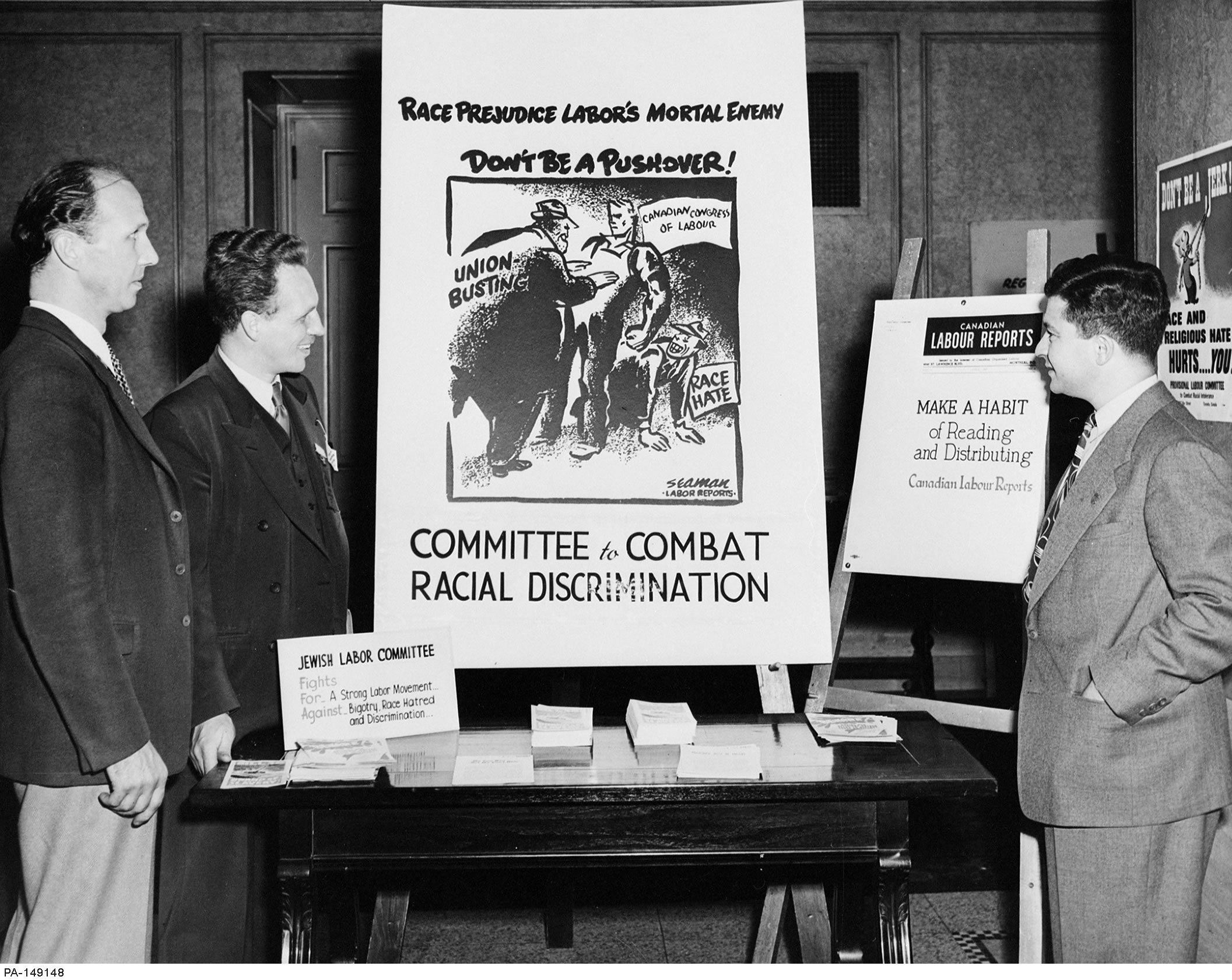Case Study: Ligue des droits et libertés
Past names include Ligue des droits de l’homme and the Quebec Civil Liberties Union. Ligue des droits de l’homme also had chapters in Quebec City, Estrie, and Sept-Îles.
No specific event triggered the creation of the Ligue des droits de l’homme. Its 1963 origins can be traced to several leading Quebec intellectuals who envisioned a modern rights association that would serve the province and possibly the nation as a whole. It was an initiative of Father Gérard Labrosse, a French-speaking Jesuit, who recruited Pierre Trudeau (law professor at l’Université de Montréal), Jacques Hébert (a publisher), and J.Z. Léone Patenaud to help form a provisional committee with nineteen others. Included in this collection of prominent figures were Frank Scott and Thérèse Casgrain. A renowned constitutional scholar, Scott was famous for his defeat of the Padlock Act, and Casgrain, a notable feminist, had played a significant role in winning the provincial vote for women in 1940. Labrosse drafted the group’s constitution, and the provisional committee compiled a list of potential members to form the administrative council, the association’s governing body. By May 1963, the provisional committee had recruited fifty-four individual members and four group members, one of which was the Fédération des travailleurs du Québec. A general assembly met on 29 May 1963, with Frank Scott presiding. During the meeting, the constitution was voted on and accepted, and a Montreal lawyer, Alban Flamand, was elected the first president. Originally, the group was dubbed the Ligue des droits de l’homme de la Province de Québec, but Trudeau, determined that it would play a national role, suggested that the reference to Quebec be dropped. Thus was born the Ligue des droits de l’homme/Civil Liberties Union. In 1978, it changed its name to the Ligue des droits et libertés after the newly established women’s committee raised concerns about the gendered implications of the original name (the English name, Civil Liberties Union, remained unchanged).
Over the next forty years, the LDH established itself as one of the most influential advocacy groups in Quebec. Between 1963 and 1972, it was primarily interested in legal reform, and it was a key player in revising the regulations that dealt with coroners’ investigations and the treatment of prisoners and the mentally ill. It also convinced the provincial government to investigate its statutes, which prompted a major revision to better protect individual rights. Many LDH founders were members of Canada’s political elite. Pierre Trudeau was elected prime minister in 1968 and appointed Gérard Pelletier to his cabinet. Thérèse Casgrain became a senator in 1970 (the year she left the LDH). Trudeau also offered Frank Scott positions in the Senate and the Supreme Court of Canada (which he turned down), although Jacques Hébert accepted positions on the CRTC and the Senate. Claude Forget became minister of social affairs in Premier Robert Bourassa’s Liberal government, and Jacques-Yvan Morin would serve in the National Assembly as leader of the official Opposition, the Parti Québécois.
After 1972, the leadership of the LDH changed hands, and the group became more radical and nationalist. It took a stand on issues such as language rights and self-determination, and succeeded in its campaign to have the provincial government enact a bill of rights (1975). A leading player in the Canadian Federation of Civil Liberties and Human Rights Associations, it worked on numerous fronts through the 1970s and 1980s on issues such as the Olympics, children’s rights, the needs of the elderly, and illegal acts perpetrated by the RCMP. Its prisoners’ rights committee, a leading advocate for the rights of prisoners in Canada, helped win the provincial franchise for prisoners in 1980. Although the LDH almost collapsed during the early 1980s due to internal divisions and poor management, it bounced back and remains active today.
Further Reading
Clément, Dominique. Canada’s Rights Revolution: Social Movements and Social Change, 1937-82. Vancouver: UBC Press, 2008.
Clément, Dominique. “An Exercise in Futility? Regionalism, State Funding and Ideology as Obstacles to the Formation of a National Social Movement Organization in Canada.” BC Studies 146 (2005): 63-91.
Clément, Dominique. “Generations and the Transformation of Social Movements in Post-War Canada.” Histoire sociale/Social History 42, 84 (2009): 361-88.
Archives
The LDH (now called Ligue des droits et libertés) archives are at the Service des archives et de gestion des documents, Université du Québec à Montréal.
 Site Resources
Site Resources-
- Any use of material or referencing content from HistoryOfRights.ca should be acknowledged by the User and cited as follows:
–
- Clément, Dominique. “page title or document title.” Canada’s Human Rights History. www.HistoryOfRights.ca (date accessed).


 Encyclopaedia
Encyclopaedia 
 © 2024 COPYRIGHT CLÉMENT CONSULTING. ALL RIGHTS RESERVED.
DEPARTMENT OF SOCIOLOGY, UNIVERSITY OF ALBERTA
© 2024 COPYRIGHT CLÉMENT CONSULTING. ALL RIGHTS RESERVED.
DEPARTMENT OF SOCIOLOGY, UNIVERSITY OF ALBERTA